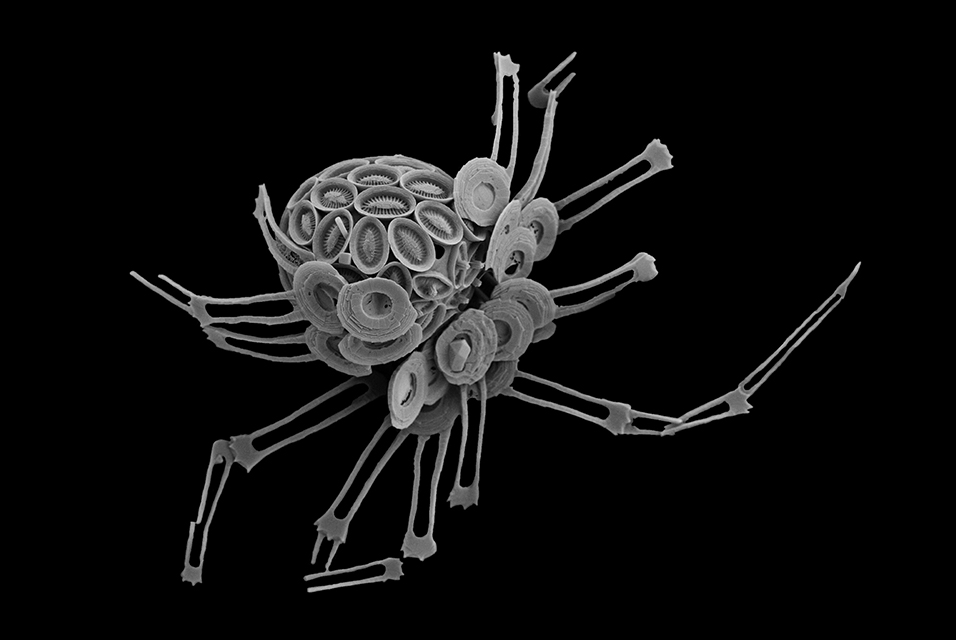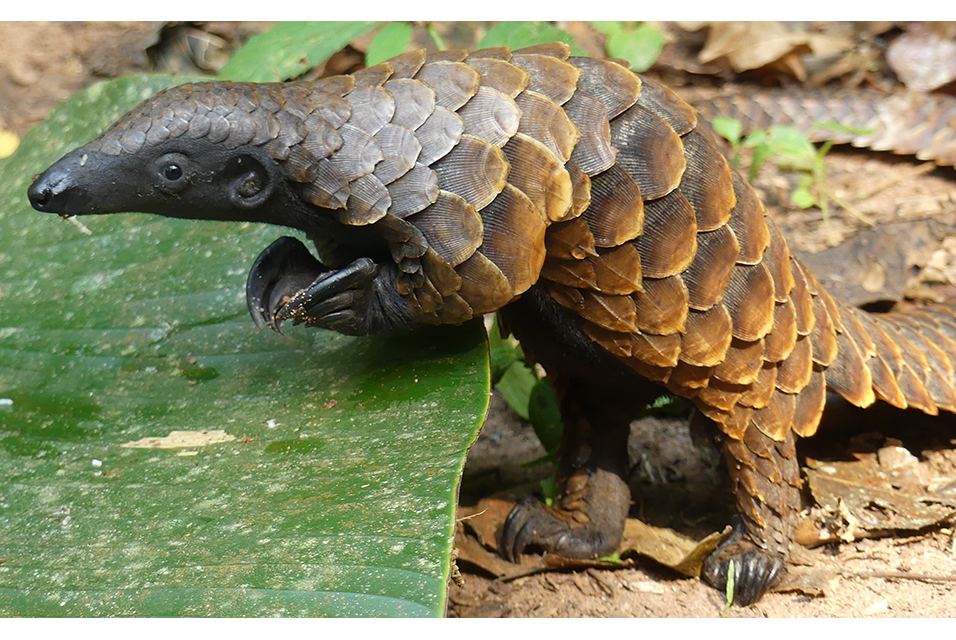EAST BOOTHBAY, ME.- Coccolithophores, a globally ubiquitous type of phytoplankton, play an essential role in the cycling of carbon between the ocean and atmosphere. New research from
Bigelow Laboratory for Ocean Sciences shows that these vital microbes can survive in low-light conditions by taking up dissolved organic forms of carbon, forcing researchers to reconsider the processes that drive carbon cycling in the ocean. The findings were published this week in Science Advances.
The ability to extract carbon from the direct absorption of dissolved organic carbon is known as osmotrophy. Though scientists had previously observed osmotrophy by coccolithophores using lab-grown cultures, this is the first evidence of this phenomenon in nature.
The team, led by Senior Research Scientist William Balch, undertook their experiments in populations of coccolithophores across the northwest Atlantic Ocean. They measured the rate at which phytoplankton fed on three different organic compounds, each labeled with chemical markers to track them. The dissolved compounds were used by the coccolithophores as a carbon source for both the organic tissues that comprise their single cells as well as the inorganic mineral plates, called coccoliths, which they secrete around themselves. Uptake of the organic compounds was slow compared to the rate at which phytoplankton can take up carbon through photosynthesis. But it wasn't negligible.
"The coccolithophores aren't winning any 'growth race' by taking-up these dissolved organic materials," Balch said. "They are just eking out an existence, but they can still grow, albeit slowly."
Plants, like coccolithophores, typically acquire their carbon for growth from inorganic forms of carbon extracted from the atmosphere like carbon dioxide and bicarbonate through photosynthesis. When coccolithophores die, they sink, carrying all that carbon down to the ocean floor where it can be remineralized or buried, effectively sequestering it for millions of years. This process is called the biological carbon pump.
As part of a parallel process called the alkalinity pump, coccolithophores also convert bicarbonate molecules in surface water into calcium carbonate—essentially limestone—that forms their protective coccoliths. Again, when they die and sink, all that dense inorganic carbon is ballasted to the seafloor. Some of it then dissolves back into bicarbonate, thus "pumping" alkalinity from the surface to depth.
But the new evidence suggests that coccolithophores aren't just using these inorganic forms of carbon near the surface. They're also taking up dissolved organic carbon, the largest pool of organic carbon in the sea, and fixing some of it into their coccoliths, which ultimately sink into the deep ocean. This suggests that the uptake of these free-floating organic compounds is another step in both the biological and alkalinity pumps that drive the transport of carbon from the ocean surface to depths below.
"There's this big dissolved organic carbon source in the ocean that we always assumed wasn't really related to the carbonate cycle in the sea," Balch said. "Now we're saying that some fraction of the carbon that is going to depth is really coming from that enormous pool of dissolved organic carbon."
This is the third and final paper published as part of a three-year project. The overall effort was inspired by a decades-old dissertation by William Blankley, a graduate student at Scripps Institution of Oceanography, Balch's alma mater. In the 1960s, Blankley was able to grow coccolithophores in the dark for 60 days feeding them glycerol, one of the organic compounds used in the present study. Unfortunately, he died before his research could be published. The fact that Blankley's findings could be reproduced all these years later with new technology, Balch said, is credit to the quality of that early work.
The real challenge of the most recent study, though, was to undertake that research outside of a controlled lab environment. The team had to devise a method to measure these organic compounds in seawater—at ambient concentrations orders of magnitude lower than the Blankley experiments—and then track how they were being taken up by wild coccolithophores.
"When you culture phytoplankton in the lab, you can grow as much as you want. But in the ocean, you take what you get," Balch said. "The challenge was finding a signal in all the noise to say, proof positive, that it was coccolithophores taking up these organic molecules into their coccoliths."
Though the current project is complete, Balch said the next step is to examine whether coccolithophores are able to take up other organic compounds found in seawater at the same rate as the three tested thus far. Though the coccolithophores were using the three dissolved compounds at slow rates in these experiments, there are thousands of other organic molecules in seawater that they could potentially absorb. If they are using more of them, this finding may prove to be an even more significant step in understanding the global carbon cycle.










